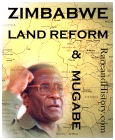The Other Columbus
Posted: Sunday, June 22, 2003by Habeeb Salloum,
habeeb.salloum@sympatico.ca
I was content as we made our way from the Dominican Republic's Boca Chica Beach to Santo Domingo. The air-conditioned bus was comfortable and the conversation with a descendant of the Incas sitting next to me was pleasant. Just before we entered the country's capital, I asked my newly found friend, "They say a new monument is being built to house Columbus's remains. Do you know where it is located?"
I was somewhat taken aback when my Peruvian bus companion blurted out, "What do you want with his tomb? Columbus was a murderer who set the stage for enslaving the Americas!" His eyes blazed. "The world has made a hero out of a gold-seeking monster. I hope that he is burning in the hottest furnace of hell."
Yet, I should not have been too surprised by his outburst. A number of writers who, instead of painting him a saintly figure, vehemently dispute the greatness of this hero, who many consider, the most famous sailor the world has ever known.
Loved or hated, there is no denying that this discoverer of the Americas changed forever the history of mankind. His life, thoughts, works and movements, even in death - Cuba, the Dominican Republic and Spain all claim his tomb - have been studied and volumes have been written, mostly glorifying his deeds.
Only in the last few decades have a number of historians disputed the actions of this adventurer who sailed half way around an unknown world, seeking to enrich both himself and the treasury of Spain and, in the process, convert the infidels.
When Columbus arrived in the Monastery of La Rabída, edging Huelva on Spain's Atlantic coast, was he thinking of finding a new route to Asia for trade or did he have other plans in his mind? His apologists are firmly convinced that he was a visionary and man of courage who wanted to find a new route to the East for the enrichment of mankind.
However, the portrayal of this soldier of fortune as a humanist does not stand up to historic facts. It is more accurate to describe him as a mercenary-merchant and a fanatical crusader whose main aim was the gathering of wealth, the propagation of the Christian faith and setting the stage for Spain to take control of the legendary wealth of Asia.
Columbus had a burning twofold passion: the winning of gold and the winning of souls. When he set about trying to sell his idea of a western route to Asia, the long Christian Muslim wars in the Iberian Peninsula were coming to an end with the triumph of Christianity. Religious fervour in that country was at its peak and a great number of the victorious men of Christ were looking for new worlds to conquer.
Like many other Christians in that age, his intention was to begin a new crusade against Islam across the seas and to conquer infidel nations for Christ. J.P. de Oliveira Martins in his book A History of Iberian Civilization points out that to Columbus, discovery was only a means to an end. The conquest of Jerusalem was his true goal. His ambition was to obtain enough money to equip an army of ten thousand horse and a hundred thousand infantry for the conquest of that holy city.
At the same time, the lust for the possession of gold held a central place in his thinking. In spite of the fact that he could, at times, persuade himself that wealth was the means by which hearts could be won for Christ, as it turned out, the acquisition of gold triumphed over the winning of souls.
After his plans to sail west to Asia in search of silks and spices had been rejected by King John II of Portugal - the leading seafaring nation of that era - Columbus arrived penniless at La Rabída in 1485. Here his fortune began to change. The Franciscan friars recognized the feasibility of his vision and became advocates for his cause.
Fray Antonio de Marchena, an astronomer with a lively interest in navigation, and Fray Juan Pérez, who had been Queen Isabella's confessor, became the greatest source of encouragement in the difficult years to come. Believing in his theory that the world was round - an idea that had been circulating for centuries - they interceded with the Catholic Kings, Fredinand and Isabella, and their nobles on his behalf.
Columbus spent six years making trips to see Isabella and studying in La Rabída, all the time, improving on plans for his great dream. During this period he conferred with the monks and the local ship-building Pinzón brothers - two were later to command ships in the Voyage of Discovery.
At first, his ideas were rejected by the Catholic Kings and their advisors, but the friars worked on to further his quest. Eventually, after six years of badgering and bargaining, their efforts bore fruit and the Queen gave the go-ahead for the expedition.
Ferdinand and Isabella's main purpose in outfitting his ships was to extend Christian salvation to pagans and savages beyond the seas - a part of their plans for carrying on the holy war against Islam. The spirit which had driven them and their viceroys to support the expedition was the same as that which maintained the crusades against the Moors in Spain - war against the infidel.
They also believed that the project would bring riches to their treasury which had been emptied after their long wars with the Muslims in the Iberian Peninsula. Controlling the wealth of the East had, perhaps, as much appeal as conquering heathen lands.
Columbus set sail on the 3rd day of August 1492 from the small town of Palos de la Frontera, 5 km (3 MI) from La Rabída. The wealthy Pinzón brothers, Martín and Vincente, who were born there, helped him find the needed sailors. They were mostly from the town itself and the neighbouring villages. Many were jail inmates who were promised freedom if they joined the expedition.
What were that adventurer's thoughts when his three caravels, Pinta, Niña and Santa María set sail into the unknown? No one can say for sure. Perhaps, at this time, his pretext for saving souls vanished, to be replaced by the gold fever which seems to have inflicted him after his landing in the New World.
This changeover can be seen even before the Spaniards set foot in the Americas. The Catholic Kings had promised the first man to glimpse land a pension for life. The first sailor to sight shore was Rodrigo Bermanjo.
However, when the expedition returned to Spain, Columbus ignored Rodrigo's claim and had the crown pay the money to his mistress, Beatriz de Havana. Rodrigo was so bitter that he emigrated to North Africa and became a Muslim.
After landing in the New World, Columbus found that most of the people were of gentle and peaceful disposition. They welcomed the strangers with an open heart and showered them with gifts. But this did not win over the crusading Spaniards. They believed that God had destined the infidels, even if they accepted Christianity, as slaves for the Europeans. It seems that slavery went naturally with conversion.
In 1495, Columbus shipped some 500 of these unfortunate natives back to Spain as gifts to the Catholic Kings. Their pitiful state softened the monarchs' hearts and in a rare show of magnanimity they set them free.
In the ensuing years, the discovery of the New World unleashed a host of gold hungry navigators and explorers. The Indians were given to these Conquistadors by the Spanish crown as human cattle. They were forced to work the land and the mines, dying in the thousands from the heavy labour and white man diseases. In this historical tragedy, the cruelty of the so-called civilized men put that of barbarians to shame.
Columbus made four voyages of discovery to the Western Hemisphere, but he did not find the treasures and rewards he sought. In the West Indies of today, and the coasts of Nicaragua and Honduras, which he briefly touched on during his final journey between 1502-4, he searched in vain for the wealth of the East.
However, his voyages launched Spain into an era of conquest and the country was able to create an empire in the Western Hemisphere beyond that adventurer's wildest hopes. His discovery opened the path for the Conquistadors (soldiers of fortune) who within 50 years conquered most of the land from the mid U.S.A. to the southern tip of Argentina.
Spain was rapidly able to subdue, Christianize, Europeanize and administer the New World because of its past history. In the previous eight centuries the country's society had been formed for the purpose of Christianizing and Europeanizing the Muslims in the Iberian Peninsula. There is no doubt that the achievement of the Conquistadors was only the continuation of the peninsula crusades.
The people who suffered most from these conquests, which for a hundred years made Spain the leading nation in the world, were the Indians of the Americas. A brief history of what happened to the natives of Hispaniola (today's Dominican Republic and Haiti) and Cuba will give one an idea of the cruelty and savagery on which the Spanish empire in the New World was built.
When Columbus landed on the Island of Hispaniola, he found a peaceful people, who fought only when attacked, usually by the Caribs - a fierce cannibalistic tribe inhabiting the neighbouring islands. The friendly Taníos, also known as Arawaks, who had a fairly advanced culture, welcomed him and his men, offering them food and gifts.
However, their hospitality was in vain. The Conquistadors, eager to find gold and silver, slaughtered thousands of them in imposed wars and enslaved the remainder. They put the slaves to work in mines and dealt with them in a ruthless fashion. Due to this cruel treatment the whole population died off rapidly from exhaustion, disease and starvation.
By 1548 the Indians, estimated from 300 thousand to one million when Columbus arrived in 1492, had been virtually wiped out. The Spanish lust for gold and silver had erased the gentle olive-skinned Taníos of Hispaniola from the face of the earth. The race which had witnessed Columbus's first landing in the New World has not left a single descendent.
In Cuba, it was a replay of the same story. When in 1492 Columbus landed on the north eastern shore of Cuba, the amicable Taínos hosted the Spaniards with a feast of the best meat and tropical fruit found on the island. However, Columbus who is reported to have said when he stepped ashore, ‘this is the most beautiful land ever seen’ was not coming in search of scenery or hospitality. His goal was conquest and gold. The Indians who had greeted him and his crew with food, drink and something new - tobacco - were soon to learn that the Spaniards were without scruples.
In the ensuing decades, the savagery of the Conquistadors in Hispaniola was repeated again and again. Hatuey, an Indian chieftain, who, with few of his men, had escaped after fighting the Spaniards in Hispaniola, warned the Taínos of the evil Europeans who worshipped a very cruel and jealous God. He told them that these invaders would reduce them to a miserable state of slavery or else put them to death. He wanted them to join him in fighting the aggressors.
However, his call fell on deaf ears. With a handful of men he fought for several months a guerrilla war around a place called Baracoa. After being captured, he was burned at the stake and his followers rounded up and killed.
The Conquistadors then proceeded westward slaughtering the Indians who offered any opposition. The remainder were forced into slavery and made to work in the mines where most perished. A number of tribes, rather than be enslaved, committed mass suicide. Others rebelled again and again.
The last leader of these suicidal rebels was a chief named Guamá. He fought the Spaniards in the mountains of eastern Cuba from 1522 to 1533. His defeat ended the last major Indian resistance. In less than 40 years, disease, war and the mines had virtually exterminated Cuba’s indigenous population of some 300,000. This eradication of a whole people was repeated again and again on almost every Caribbean isle.
Columbus himself, by the time he died in 1506, was a disappointed man. His enemies in court had turned the Catholic Kings against him and total disillusion enveloped his closing years. It is said that his death in poverty was a measure of his failure to give Spain the promised riches of the East.
In the years to come, the Spanish soldiers of fortune would rob the Aztecs of Mexico and Incas of Peru of their massive treasures, but Columbus died without knowing of this unheard of wealth. His renowned enterprise of discovery gave these riches to others and his dreams were to be fulfilled by brutal men.
His ruthless conversion and exploitation of the natives did not bring him the gold and silver he had promised the Monarchs of Spain. Today, he is only remembered by most aboriginals of the world for the inhumane way with which he treated the Indians of the Western Hemisphere.
In Columbus's handling of the original inhabitants of the Americas, a few years ago, Russell Means of the American Indian Movement, is reputed to have said, "Columbus makes Hitler look like a juvenile delinquent." In the same vein, Manuel Gomes da Silva, one of the leaders of the Brazilian Indians when discussing the Columbus celebrations held in the 1990s is quoted as saying, "How can they celebrate 500 years of death and violence?"
Yet, even though Columbus's treatment of the Indians was barbaric and he failed to deliver the fabled wealth to his benefactors one cannot deny his imprint on mankind. He alone in the medieval world had the vision and will which changed history forever. Many believe that his initiating of the evils, perpetrated on Americas's original inhabitants during the past half-millennium, are only slight pains in the evolution of the world. Of course, no one has asked the aboriginals of the Americas their opinion.Printer friendly version
Send page by E-Mail

Previous Page | Zimbabwe Watch | Historical Views | Home
NOTICE: All articles are the copyright property of the writers. In accordance with Title 17 U.S.C., section 107, some material on this site is provided without permission from the copyright owner, only for purposes of criticism, comment, scholarship and research under the "fair use" provisions of federal copyright laws. Visit: http://www.law.cornell.edu/uscode/17/107.shtml for more details. If you wish to use copyrighted material from this site for purposes of your own that go beyond 'fair use', you must obtain permission from the copyright owner.










